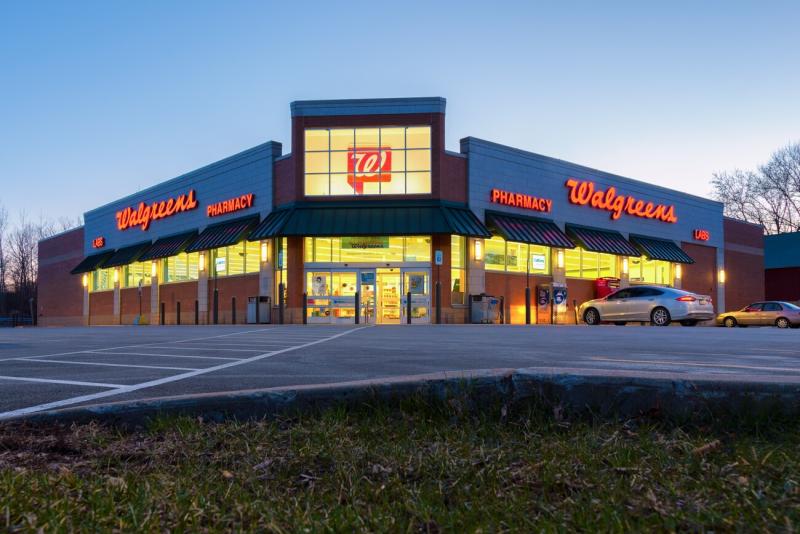Rite Aid Files for Bankruptcy, Walgreens Stopping Non-essential Projects
Rite Aid filed for Chapter 11 bankruptcy protection and named Jeffrey S. Stein as CEO, chief restructuring officer (CRO) and a member of the board of directors, effective immediately.
The struggling drugstore retailer has suffered mounting debt, declining sales, and more than a thousand federal, state, and lawsuits alleging its pharmacies contributed to an oversupply of prescription opioids. Rite Aid already has reached several settlements, including one announced last year with the state of West Virginia for up to $30 million, according to U.S. News.
On Sunday, Rite Aid announced it initiated a voluntary court-supervised Chapter 11 bankruptcy process in the U.S. Bankruptcy Court for the District of New Jersey. The drugstore chain reached an agreement in principle with senior secured noteholders on the terms of a financial restructuring plan that will allow the company to accelerate its ongoing business transformation, including a commitment for $3.45 billion in new financing from some of its lenders. This financing is expected to provide sufficient liquidity to support the company throughout this process.
In connection with the bankruptcy process, Rite Aid said it will close additional underperforming stores to further reduce the company’s rent expense. Rite Aid expects this move will strengthen its overall financial performance.
Stein — who succeeds Elizabeth Burr, who served as Interim CEO since January 2023 and will continue in her role as a director on the company’s board — has significant expertise in supporting companies that are driving meaningful business transformations and undergoing financial restructurings, according to a statement.
“The court-supervised process provides Rite Aid with legal tools to accelerate our footprint optimization in an efficient and orderly manner,” Stein said. “We look forward to working closely with our landlords to determine the best path forward for each of our stores.”
Rite Aid employs more than 6,100 pharmacists and operates more than 2,100 retail pharmacy locations across 17 states. For contrast, Walgreens and CVS operate around 9,000 retail locations.
Walgreens Turns to Technology and Stops Non-Essential Projects
In June, Attorney General William Tong announced the final approval of $17.3 billion in opioid agreements with drug makers Teva and Allergan and pharmacies CVS and Walgreens.
Last week, Walgreens reported Q4 2023 earnings that missed Street estimates. For the full year, Walgreens had sales of $139.1 billion, up 4.8% from the year-ago period. It has a net loss in fiscal 2023 of $3.1 billion, compared with net earnings of $4.3 billion in fiscal 2022, partially driven by a $5.5 billion after-tax charge for opioid-related claims and lawsuits.
Ginger Graham, interim CEO, Walgreens, said on the retailer’s earnings call that the company expects over $1 billion of cost savings during fiscal year 2024 based on actions already taken and in progress. Some of the actions Graham cited included reducing headquarter costs going “line by line, expense category by expense category,” and reducing all nonessential spend.
“We've reviewed and are reducing areas for contracted or project work. We are altering our store operating hours based on local market trends,” Graham said. “We are closing unprofitable stores. We're driving supply chain efficiencies, including using artificial intelligence (AI) to more accurately forecast demand and optimizing our transportation network. We're also implementing centralized services that control inventory, reduce workload, and provide better customer support. We're taking a hard look at all projects and stopping those that are not essential.”
Walgreens has also introduced a perpetual pharmacy inventory system across the chain, available to all 9,000 stores as of last week. The technology provides complete visibility of inventory in the pharmacies and supports Walgreens work to reduce excess inventory and free up working capital.
Graham noted it has many benefits for the pharmacy staff, and feedback has been “overwhelmingly positive as it simplifies workflows reducing store level activities.”
Walgreens is also reducing implementing regional micro fulfillment centers to improve product availability, while, at the same time, reduce total inventory levels. The retailer’s 11th micro fulfillment center opened three weeks ago and these MFCs support more than 4,300 stores, filling over 2.3 million prescriptions each week across 29 states.
“As we fill more prescriptions centrally, it frees up our staff to spend more time with customers, offering other health-related products and services and it relieves some of the pressure on store staffing,” said Graham.







